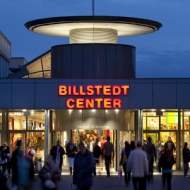Investment in European retail assets soars by 41%
21 March 2016
Retail transactions as a share of overall commercial investment activity increased from 22% in 2014 to 26% in 2015.
In some markets, including Belgium, Finland, The Netherlands, Norway and Spain, retail properties accounted for a higher proportion of investment deals than the office sector, which traditionally dominates real estate investment activity. Most retail investment originated from international sources, with 57% of transactions taking place cross-border with American, French, UK and Canadian buyers being particularly active as they sought out opportunities in other countries which offered secure income streams.
According to RCA data, European malls and shopping centres alone attracted €32.3 billion of investment in 2015, a 47% increase on the €22 billion invested in 2014.
2015 shopping centre investment volumes surpassed the previous peak reached in 2007, when €22.2 billion was invested in the market, as investors were attracted by continued strong demand by retailers for space in Europe’s prime shopping destinations and well located secondary assets. This has led to average prime shopping centre yields across the continent hardening to 4.8% in Q4 2015, says Savills, with the yield gap between the core markets and the peripheral markets of Europe also closing, reflecting improving economic performance and investor confidence in the markets of Ireland, Spain and Italy. On an annual basis average prime yields in the peripheral markets moved in by 54 bps while in the core markets by 20 bps.
Oliver Fraser-Looen, Director, Savills Retail cross border investment, says: “2015 witnessed the sale of numerous retail portfolios, including a number on a pan-European level. We expect this trend to continue in 2016 as owners either look to lock in profits, complete business plans or sell non-strategic assets. The portfolio sale is very much back in favour as vendors are able to dispose of large quanta of real estate in one transaction, thus limiting transaction risk. Buyers, meanwhile, are finding such deals attractive as they are able to attain scale and there is a rationalisation of buying wholesale. The key components for any successful portfolio sale are pricing, size and being homogeneous.”
“Dynamic shopping centres, where landlords work closely with their occupiers to create vibrant and stimulating environments to attract and inspire visitors, remain top of investors’ wish lists as retail real estate continues to compare favourably to the volatile equity markets and the low yielding bond markets. There is therefore the potential for investment volumes to climb even higher in 2016 in the context of fairly low interest rates, availability of finance, and improving economic conditions”, continues Eri Mitsostergiou, Director, Savills European research.
“We expect yield hardening on prime opportunities to slow down, to accelerate for secondary opportunities and to start for tertiary options. All gaps will narrow further: between core and peripheral countries, between capital and regional cities, and between A and B locations.”
General Enquiries
+44 (0) 20 7075 2827

